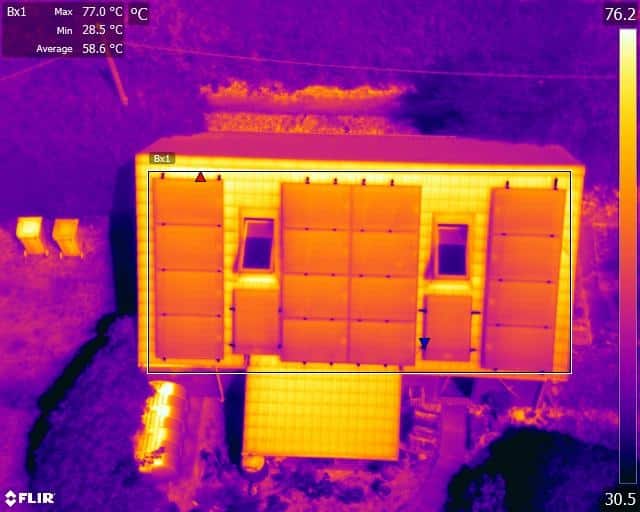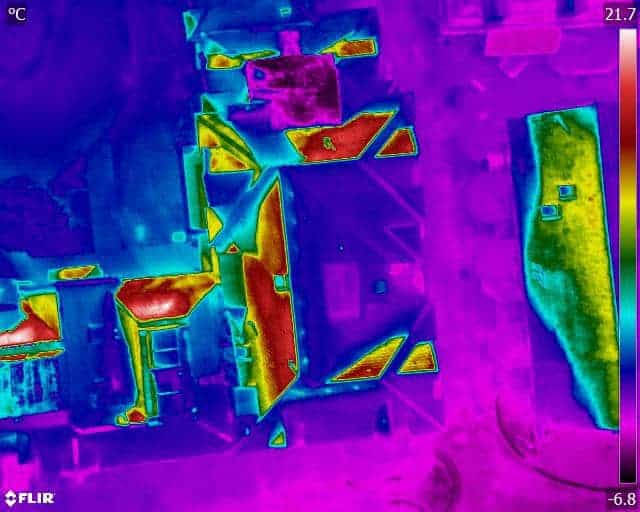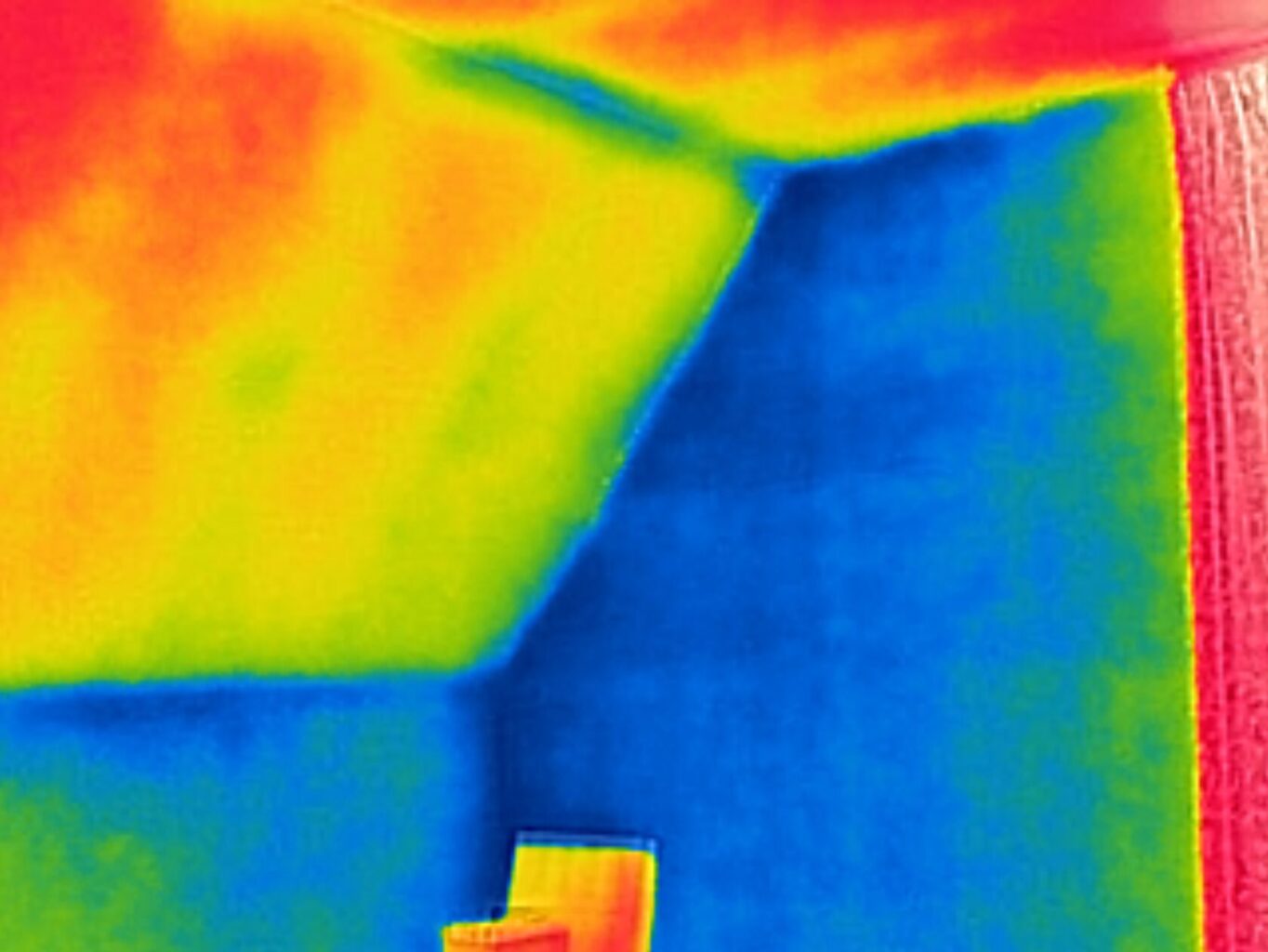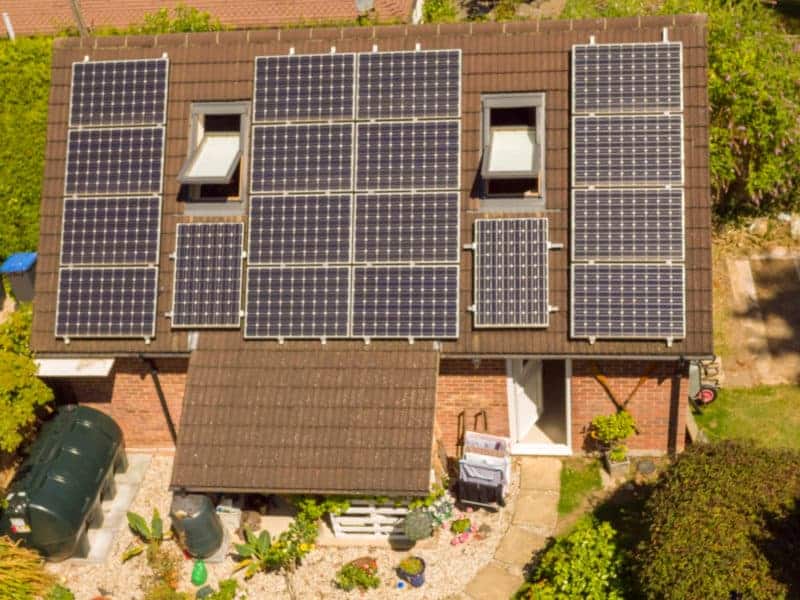
Drone Thermal Imaging Inspections
Here at Drone Media Imaging, we are proud to have a state of the art thermal camera as part of our equipment. It allows us to provide our clients with exceptional quality thermal images that can be used in a variety of ways.

Temperatures are recorded during the flight and can be examined for each area in the resulting images. Of course flights have to be conducted with the relevantly trained personnel (we hold Level 1 Thermography Certification) and conducted under the right conditions if the results are going to be meaningful.
Our three most common thermal inspection areas are…
- hotovoltaic cells or solar panels
- Water ingress detection
- Heat loss / insulation inspection
Photovoltaic Surveys
Conducted in the summer months, these surveys can be conducted quickly and cost-efficiently either on large scale installations, on panels installed on domestic properties or anything in between. The resulting images can easily show damage to solar PV cells or defective converter boxes.
Malfunctioning solar cells can create further damage such as melted solder connections, cracking of the protective glass cover and degradation of the adjacent cells. Therefore, early identification can help to minimise repair bills as well as to keep the solar panels functioning at maximum capacity. Targeted repair teams can then use the images as reference to direct them to the problem sites.
Water Ingress Detection
This can be a particular problem with flat roofs although all areas of a building can be affected. This type of inspection is conducted in the summer months when the sun can heat the problem area from the outside. If there is water inside the structure, it will retain the heat for longer than the structure itself and so be clearly visible once the heat of the day has started to dissipate. This can be detected and corrected before interior damage occurs.
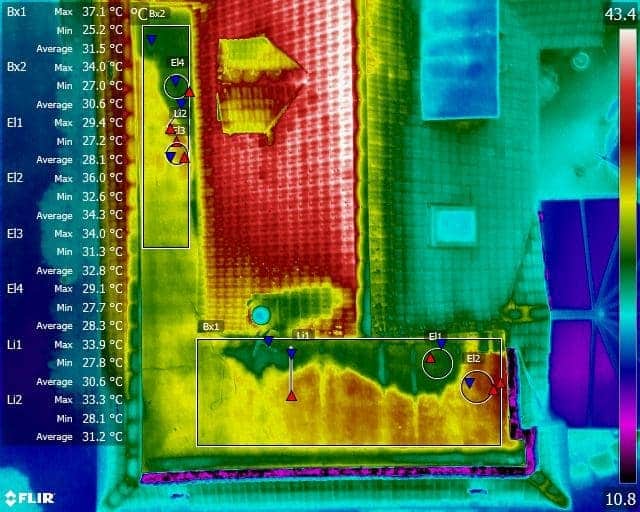
Hi Steve just to let you know that after your thermal imaging visit I decided to replace the flat roof with a pitched roof and this has now been completed. Despite it being a super hot summer there was indeed water sitting between the layers of fibreglass and over boarding. No there was no signs of water ingress into the house, the original layer of fibreglass was retaining the problem, however, some of the boards were rotten and soaking. Thanks for your help with this, I’m glad to say that it pushed me on to rid us of the problem. Kind regards, Jane
Heat Loss & Insulation Inspection
This type of inspection is conducted in the cooler months of autumn and winter as, at this time of year, it is easier to obtain the difference required between internal and external temperatures to clearly highlight areas of insulation problems or thermal bridging.
In all cases, a simple non-invasive drone flight under the right conditions can be all that is needed to identify hidden problem areas. Early identification can mean cheaper repair bills, less downtime and inconvenience and more peace of mind.
Just get in touch to discuss your requirements in more detail.
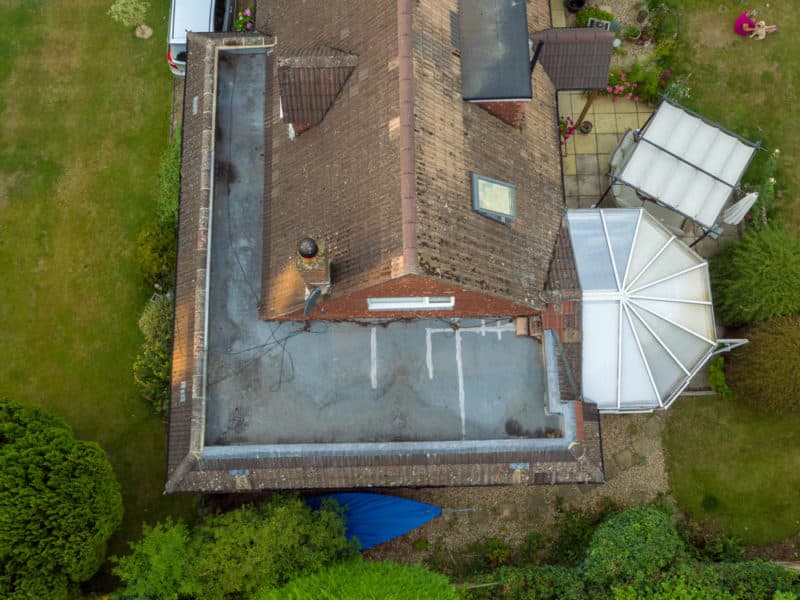

Expert Infrared Inspections for Accurate Thermal Assessments
Need professional thermographic analysis for your project? Our certified experts use the latest infrared technology to deliver precise results. Contact Drone Media Imaging today for expert thermal imaging services.
related posts
Thermal imaging technology is a powerful tool for building surveys, allowing for the detection of hidden issues that affect a building's efficiency and structural integrity. It can uncover insulation deficiencies, diagnose HVAC system malfunctions, and even detect water leaks and electrical faults. By utilizing thermal imaging, property owners and surveyors can proactively address problems, saving time, money, and preventing further damage. As we move towards smart building diagnostics, thermal imaging is a critical component in ensuring the longevity and sustainability of our built environment.

